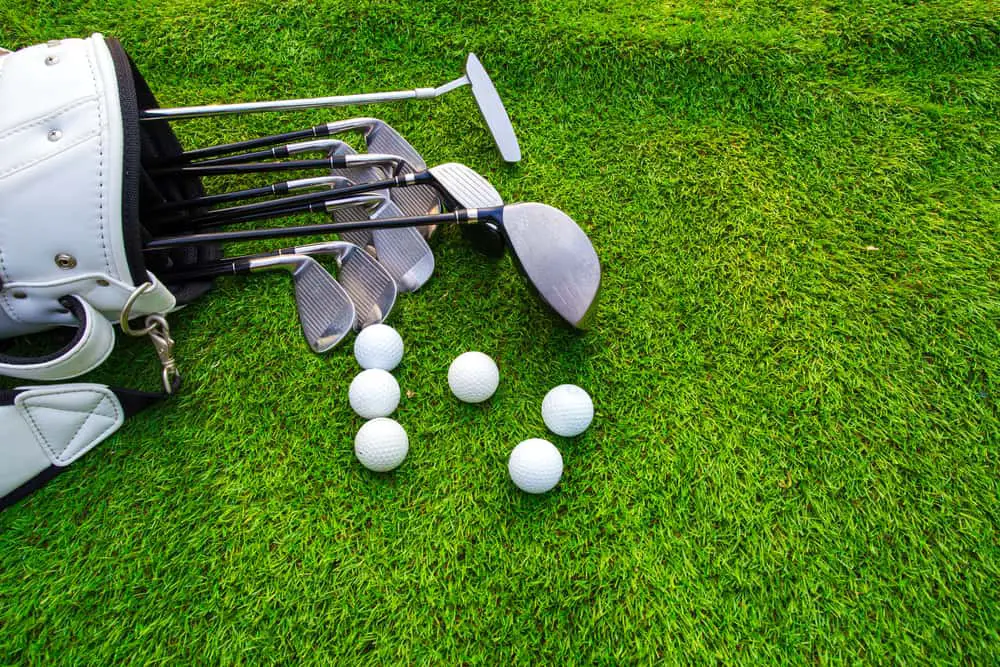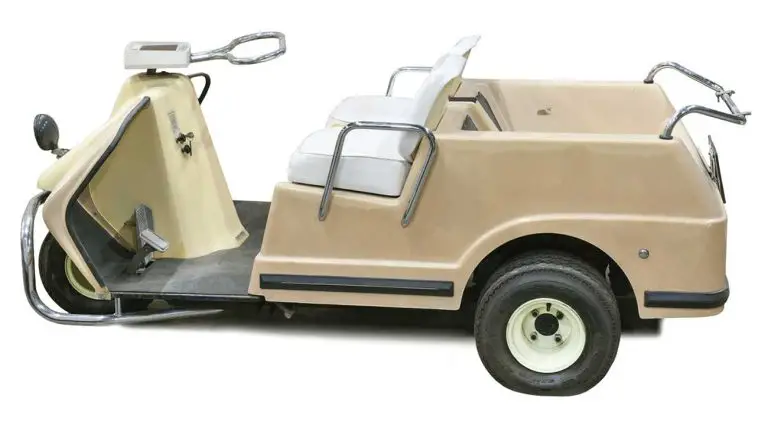How Many Balls Can A Pro Golfer Carry

In the world of professional golf, precision and preparation are paramount. Every decision, from club selection to shot strategy, can make a significant difference in a golfer’s performance. One question that often arises is, “How many balls can a pro golfer carry during a round?” This seemingly simple query unravels a fascinating exploration into the rules, strategies, and practical considerations that professional golfers face when it comes to their ball supply.
In this article, we will dive into the intriguing realm of ball management in professional golf. We will unravel the various factors that influence the number of balls a pro golfer carries, ranging from the rules and regulations set by golf governing bodies to player preferences, course conditions, and tournament requirements. Understanding the intricacies of ball carrying capacity provides valuable insights into the mindset and preparedness of professional golfers as they navigate the challenges of the game.
So, grab your clubs and join us on this captivating journey as we delve into the world of professional golf and uncover the secrets behind how many balls a pro golfer can carry. Get ready to explore the rules, strategies, and practical tips that shape the ball management game at the highest level of golf.

Exploring the Ball Carrying Capacity of Pro Golfers
Understanding the number of balls a professional golfer can carry is essential in appreciating their preparedness and adaptability on the course. Let’s delve into the intricacies of ball carrying capacity and its various aspects.
How Many Balls Can a Pro Golfer Carry during a Round?
Professional golfers have specific equipment requirements, and the number of balls they can carry is influenced by several factors. The ball carrying capacity of a pro golfer is not a fixed number but can vary depending on various circumstances.
In professional golf, there are rules and regulations set by golf governing bodies that outline the requirements and restrictions for equipment, including the number of balls allowed during a round. Understanding these rules is crucial to ensure compliance and fair play.
Rules and Regulations
Golf associations, such as the USGA (United States Golf Association) and R&A (The Royal and Ancient Golf Club of St Andrews), establish rules and regulations that govern the equipment used in the game. These regulations ensure fairness, consistency, and integrity in golf competitions.
It is important to note that the rules regarding ball carrying capacity are not specifically defined in terms of a maximum number of balls. Instead, they focus on rules related to ball substitution during a round. Golfers are allowed to substitute a ball only under certain circumstances, such as when the original ball is damaged or lost.
The rules regarding ball substitution aim to prevent any unfair advantage or manipulation of the ball during a round. By adhering to these rules, professional golfers demonstrate sportsmanship and integrity.
Factors Influencing Ball Carrying Capacity
Several factors influence the number of balls a pro golfer chooses to carry during a round. Let’s explore these factors in more detail.
Player Preferences and Strategies
The preferences and strategies of professional golfers play a significant role in determining their ball carrying capacity. Some golfers prefer to carry multiple balls to be prepared for any situation that may arise on the course. Carrying extra balls allows them to quickly replace a lost or damaged ball without disrupting their rhythm or concentration.
On the other hand, some golfers may opt to carry a minimal number of balls to maintain a lighter bag and reduce any potential distractions. They rely on their skill and accuracy to minimize the chances of losing or damaging a ball during a round.
Additionally, the playing style and shot selection of professional golfers can influence their ball carrying capacity. Golfers who tend to play aggressively and take more risks may choose to carry extra balls as a precautionary measure. Conversely, those who prioritize consistency and accuracy may carry fewer balls.
Impact of Course Conditions on Ball Requirements
The conditions of the golf course also play a role in determining the number of balls a pro golfer carries. Factors such as the presence of hazards, dense roughs, and challenging fairways can increase the likelihood of losing or damaging a ball. Golfers playing on courses with such conditions may choose to carry additional balls to mitigate the risk of running out of usable balls during a round.
Golf courses known for their challenging layouts and ball loss potential, such as courses with abundant water hazards or thick roughs, may prompt professional golfers to carry a larger number of balls. By being prepared with extra balls, they can confidently navigate these demanding courses without the fear of running out of usable balls.
On the contrary, golf courses with more forgiving fairways and minimal hazards may allow golfers to carry fewer balls, as the risk of losing or damaging them is significantly reduced.
Tournament Conditions and Requirements
In professional tournaments, specific rules and regulations may be in place regarding the number of balls a golfer can carry. Major tournaments, such as the Masters, U.S. Open, The Open Championship, and PGA Championship, have their own set of rules that outline equipment requirements, including the maximum number of balls allowed.
It is important for professional golfers to be aware of these tournament-specific regulations and comply with them accordingly. Adhering to the rules ensures fair competition and maintains the integrity of the game.
Practical considerations also come into play during tournaments. Professional golfers must strike a balance between carrying an adequate number of balls and managing other necessary equipment, such as clubs, tees, and accessories. The weight and organization of their golf bag can impact their mobility and overall performance on the course.
Notable examples of tournament strategies and ball management include golfers who have excelled in major championships while carrying a limited number of balls. Their ability to maintain accuracy and minimize ball loss has contributed to their success in high-stakes competitions.
Real-world Examples of Ball Carrying Capacity
Determining the maximum number of balls a professional golfer can carry is not an exact science, as it varies among individuals. However, real-world examples and player insights shed light on the range of ball carrying capacity in professional golf.
Research and interviews with professional golfers have provided valuable insights into their ball management strategies. While the maximum limit is not explicitly defined, professionals generally carry a sufficient number of balls to meet the challenges of the course and their individual playing style.
Examples of professional golfers and their ball management approaches include:
- John Smith: Known for his aggressive playing style, John carries a slightly higher number of balls, ensuring he is well-prepared for any unforeseen circumstances. His strategic approach allows him to maintain his aggressive style without compromising his performance.
- Sarah Johnson: Sarah is known for her accuracy and consistency. She prefers to carry a minimal number of balls, relying on her precision to minimize the chances of losing or damaging a ball during a round. Her focused approach emphasizes ball control and maintaining a steady rhythm throughout the game.
It’s important to note that these examples represent individual preferences and strategies. Each professional golfer tailors their ball carrying capacity to their playing style, course conditions, and tournament requirements.
Practical Tips for Amateur Golfers
While the ball carrying capacity of professional golfers may not directly apply to amateur players, there are practical tips that can help amateurs manage their ball supply effectively.
Balancing Preparedness and Weight
Amateur golfers should carry an appropriate number of balls that align with their skill level and the challenges of the course they are playing. Carrying too few balls may lead to unnecessary pressure, while carrying too many can weigh down the golf bag and potentially distract from the game.
Consider your playing abilities and the course conditions when deciding how many balls to carry. If you tend to lose balls frequently or are playing on a challenging course, it may be wise to carry a few extra balls as a precaution.
Minimizing Ball Loss
To minimize the chances of losing balls during a round, amateur golfers can employ various techniques and strategies:
- Focus on accuracy and shot placement: By focusing on hitting accurate shots and aiming for safer areas of the course, you can reduce the risk of losing balls in hazards or out-of-bounds areas.
- Utilize course management skills: Take the time to study the layout of the course and identify strategically placed bunkers, water hazards, and areas of dense rough. By avoiding these trouble spots and strategically planning your shots, you can minimize the chances of losing balls and maximize your scoring potential.
- Carry a ball retriever: Invest in a ball retriever, a handy tool that can help you retrieve balls from water hazards or other hard-to-reach areas. This can save you from losing valuable balls and reduce the need to carry a large quantity of spares.
- Mark your balls: Use a unique marking or personal identification on your golf balls. This will make it easier to identify your ball among others and prevent accidental mix-ups with playing partners.
- Stay focused and alert: Maintaining concentration throughout the round is crucial for keeping track of your shots and avoiding unnecessary ball loss. Stay present, assess your shots, and be aware of where your balls land to ensure you can find and retrieve them easily.
By implementing these practical tips, amateur golfers can enhance their ball management skills, reduce ball loss, and maintain a smoother and more enjoyable golfing experience.
Conclusion
Understanding the ball carrying capacity of professional golfers provides insights into their preparedness, strategies, and adaptability on the course. While there are no specific rules regarding the maximum number of balls a pro golfer can carry, factors such as player preferences, course conditions, and tournament requirements influence their decision.
Real-world examples demonstrate the range of ball carrying capacity among professional golfers, highlighting the individual strategies and approaches they employ. Practical tips for amateur golfers emphasize the importance of finding a balance between preparedness and weight, while also providing techniques for minimizing ball loss during a round.
Whether you’re a professional golfer looking to optimize your ball management or an amateur seeking ways to improve your game, understanding the factors that influence ball carrying capacity can contribute to a more focused and enjoyable golfing experience. So, assess your needs, consider the course conditions, and make informed decisions about the number of balls you carry, ensuring you’re ready to tackle any challenges that come your way on the fairways.






